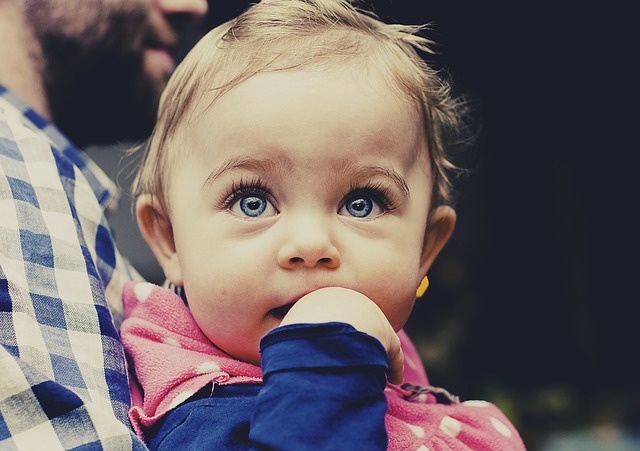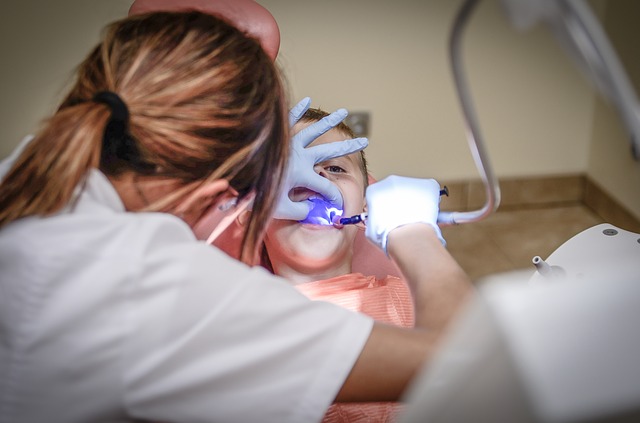
The first teeth usually pierce around the age of 6 months. However, they may appear earlier. Some children are born even with one or two teeth. In other cases, the first teeth do not come out until the age of 14 months.
What are the first signs of teething?
Teeth begin to develop for months or even years before they pierce the baby's gums. Indeed, the buds of deciduous teeth appear as early as the 6 th week of pregnancy, when the buds of permanent teeth are present from the 10 th week. The different parts of the tooth, such as enamel and root, will then develop in a specific sequence during pregnancy. However, the buds of permanent molars develop only after birth, around the age of 4 months for the first permanent molars and around 5 years for the second permanent molars.
In the majority of cases, the 20 primary teeth (milk teeth) will pierce one after the other until about 3 years. Their age of appearance is very variable.
Meanwhile, the 32 adult teeth continue to grow in the jaws. They appear between 6 and 12 years old.As for the wisdom teeth, they generally pierce later. Some people do not have any.
Ouch! Ouch! Mum! If your baby could talk to you, this sentence would often come back to his mouth! The thrust of the teeth is very painful and it extends for almost a year and a half.
It is a pain that can be very severe at one point, then calm down and come back stronger. It is very painful for parents, but even more for children!
There are warning signs of teething. Crises of tears, saliva in industrial quantities and red buttocks are a few. Add to these, mild fever, loose stools than usual and runny nose. The baby who had been sleeping for ages can also stop sleeping well due to the arrival of his teeth. He will wake up frequently during the night or during his naps, putting his hands to his mouth to nibble his fingers.
How do you soothe a teething baby?
As parents, we want to relieve our children who are in pain at all costs. But precisely, at what cost to relieve them?
There are some over-the-counter products to relieve your child. According to Catherine Ayotte, pharmacist, a topical jelly Orajel type can be used provided that it is done in the rules of art.
Indeed, the use of Orajel is rather controversial. It is effective, certainly, due to its composition based on benzocaine, an anesthetic agent. It can be applied in a thin layer with the finger or with a cotton swab that is easier to handle and allows a more precise application. The number of applications should not exceed four times a day. The duration of its effect is about thirty to forty-five minutes. The product will numb the baby's gums, soothing the pain temporarily. Unfortunately, not only will he numb his gums, but also his throat and epiglottis, this trap inside our esophagus allowing the food not to end up in the lungs when eaten.
Since a large part of your child's esophageal system will be numb, it is recommended to wait one hour after application to feed, whether through breastfeeding, bottle-feeding or food solid. The risks of choking are much higher during the use of the product.

If we want to relieve the thrust of our child's teeth without having to resort to any medication, we can try these few homemade tricks:
- Refrigerate a teething ring : Chewing a teething ring will relieve the pressure that causes pain in the baby's gums. Many teething rings have embossments that will be good for your child when he or she uses them. And since the ring is cold, it will numb its pain for a short time.
- Give her a wet washcloth : if you do not have a ring at hand, use a simple washcloth that you have soaked in cold water and leave it to your baby. He will give it to his heart by bringing it to his mouth! Note: If your child is less than 4 months old, the water you use will need to be boiled, as the baby will wash the water from the washcloth. Boil a quantity that you will keep in the fridge.
- A soft toothbrush : There are baby toothbrushes on the market. The brand Oral B Stages 1 is a recognized one. Using the brush, you can gently massage the gums of your baby. Be careful because even though the bristles of these brushes are very soft, they can hurt the delicate gums of the baby. If you are concerned about hurting yourself, simply massage them with your finger, naked or covered with a wet washcloth.
Tooth thrust is just as painful for the baby as it is for the parent. Every parent is sad at his child, feeling powerless to relieve him. Remember to always be patient, caring and gentle towards your child. It's not easy for him!
- There are plant extracts on the market that soothe the symptoms of dental flare-ups. These liquid extracts are alcohol-free because their base is made of glycerin, so safe for your child.
- There are syrups and teething gels in the pharmacy that provide temporary anesthetic benefit. In addition, homeopathic drops could also be used. However, if the pain is very severe, acetaminophen may be recommended by a doctor or pharmacist.
When will you brush your teeth?
It's never too early to start cleaning your child's teeth . From the moment the baby has his or her first tooth, you can start to clean it with a damp handkerchief or a clean wet washcloth to remove the remaining food. By the age of 12 months, you can add an age-appropriate toothpaste, which you can apply in the same way as with a washcloth. If the taste of toothpaste inconveniences the child, it is not necessary to use it. All children learn by example. Brush your teeth in front of him and spit the excess toothpaste, he will surely want to imitate you.
Around the age of one, you can buy her own toothbrush. He will begin to experiment on his own and you will be able to start the routine of daily brushing twice a day, not forgetting to go behind him of course.
Why do teeth decay?
In contact with the sugars, the bacteria react and develop an acid that attacks the enamel of the teeth for the carier. It is therefore necessary to avoid sugars more often and do not forget to brush or clean the teeth regularly during the day. Remember that even milk contains sugar , whether it be breast milk, in formula or from the cow. To avoid cavities, do not put your child on a bottle because the contact of milk left in his mouth is a breeding ground for bottle decay. Also watch what baby puts in his mouth. Bacteria are everywhere. Refuse exchanges or sharing of toys, utensils or lollipops between friends, brother and sister.
First visit to the dentist

As soon as your child has all his teeth, around the age of two and a half, he can already be seen by a dentist. Afterwards, take him to the dentist once a year for preventive caries maintenance. Do not wait too long, because the longer you wait, the more your fears will become big in the face of the mystery surrounding the dentist. If you make him live the experience positively, it will be easier later to maintain his teeth. Any child under the age of 3.5 years (maximum) should have been seen by a dentist at least once.
Primary teeth are very sensitive to decay . React to the slightest blemish and consult your dentist without delay. Most practices have developed a special approach to their practice with children: room or play area, TV corner and even rewards waiting for them at the end of the consultation.
In Quebec, the Régie de la maladie assumes the expenses related to dental visits for children. The plan covers the annual examination and some treatments for children under 10 years old.